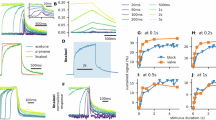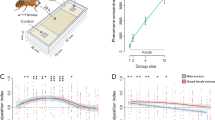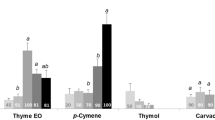Abstract
PHEROMONES have been used in population monitoring traps1 and in control by ‘confusion’2, and a good understanding of how the male finds the female is of great practical importance in the development of these techniques. The problem of insect orientation towards distant odour sources is also intrinsically interesting and much work has been done with wind tunnels to study the flight of moths in attractant plumes (the most recent of many reports is ref. 3). These studies have shown that moths fly upwind in a series of horizontal zig-zags which decrease in amplitude as the source is approached. Field observations support these general findings4, but they are not as detailed as the results of laboratory studies and the techniques are not suitable for night flying species, many of which have considerable economic importance. We describe here techniques for observing and recording the details of the behaviour of night flying insects in attractant plumes, and also some new findings which suggest that flight towards a sex pheromone source in one species consists of several distinct stages with deviations from a straight upwind path taking place largely in the vertical plane.
This is a preview of subscription content, access via your institution
Access options
Subscribe to this journal
Receive 51 print issues and online access
$199.00 per year
only $3.90 per issue
Buy this article
- Purchase on SpringerLink
- Instant access to full article PDF
Prices may be subject to local taxes which are calculated during checkout
Similar content being viewed by others
References
Campion, D. G. Proc. eighth Br. Insecticide Fungicide Conf. 939–946 (British Crop Protection Council, London 1975).
Campion, D. G. et al. Bull. ent. Res. 64, 39–96 (1973).
Kennedy, J. S. & Marsh, D. Science 189, 999–1001 (1974).
Shorey, H. H. A. Rev. Ent. 18, 349–380 (1973).
Nesbitt, B. F., Beevor, P. S., Cole, R. A., Lester, R. & Poppi, R. G. Nature new Biol. 244, 208–209 (1973).
Schagen, P. J. Phys. E: Scient. Instrum. 8, 153–160 (1975).
Burkhardt, D. Adv. Insect. Physiol. 2, 131–173 (1964).
Author information
Authors and Affiliations
Rights and permissions
About this article
Cite this article
MURLIS, J., BETTANY, B. Night flight towards a sex pheromone source by male Spodoptera littoralis (Boisd.) (Lepidoptera, Noctuidae). Nature 268, 433–435 (1977). https://doi.org/10.1038/268433a0
Received:
Accepted:
Issue date:
DOI: https://doi.org/10.1038/268433a0
This article is cited by
-
Three-dimensional characterization of the wind-borne pheromone tracking behavior of male hawkmoths, Manduca sexta
Journal of Comparative Physiology A (2009)
-
Analysis and Manipulation of the Structure of Odor Plumes from a Piezo-Electric Release System and Measurements of Upwind Flight of Male Almond Moths, Cadra cautella, to Pheromone Plumes
Journal of Chemical Ecology (2007)
-
Interactions between pheromone traps with different strength lures for the pine beauty moth,Panolis flammea (Lepidoptera: Noctuidae)
Journal of Chemical Ecology (1989)
-
Finding of a sex pheromone source by gypsy moths released in the field
Nature (1983)
-
Separate orientation and releaser components in a sex pheromone
Nature (1983)



